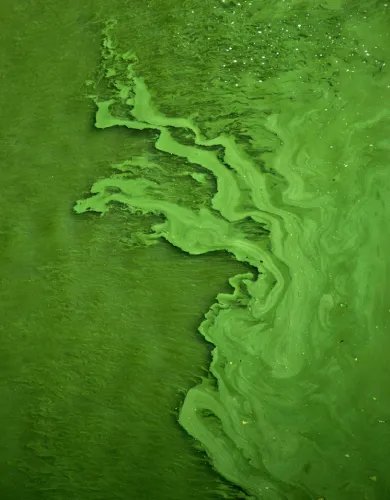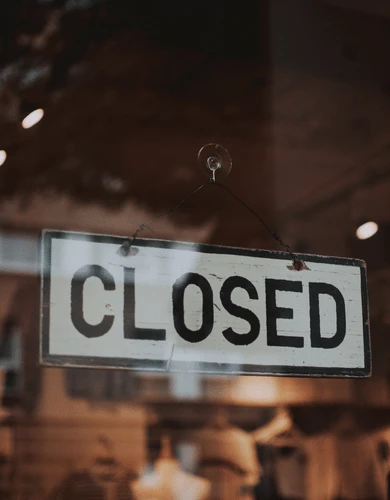Low water pressure in businesses
Water pressure gives your mains water the energy to flow freely from your taps. UK water companies do their best to keep this pressure constant, but there are always instances where it will drop and affect your water supply.
For an office, this is a minor inconvenience, but in a busy restaurant, laundry service, car wash, or even beverage producer trying to meet its quota, the result may be disgruntled owners and angry customers.
This guide aims to inform businesses on low-pressure issues and provide the best information on resolving them, whether a sudden drop or chronic low pressure on their properties.
💡 Key takeaways:
- Minimum standards: Your supplier is responsible for consistently providing a mains water pressure of at least 0.7 bar.
- Checklist: If your business is experiencing a loss in water pressure, use our checklist to systematically resolve it.
- Installing a booster: Businesses that require an increase in pressure may install an internal booster pump.
Water pressure in the mains network
The British water network is an interconnected system of reservoirs, storage tanks, treatment plants and pumps, joined together by underground sealed water pipes. Water companies are responsible for pressuring the system to ensure adequate water flow into properties connected to the network.
However, it is impossible to keep the pressure constant everywhere. In reality, the average water pressure your business receives will vary depending on factors like the height of the local water tower or reservoir, the elevation of the property, the distance to the nearest pumping station, and the condition of pipes in your local network.
💡 Average is 3 bar: The typical water pressure in the UK mains varies between 2 and 4 bar, with an average of around 3 bar. This is significantly higher than the minimum of 0.7 bar set by the standards, giving water companies an ample margin to ensure that all properties have access to a basic level of water supply.
If you want to measure the water pressure at your business property, follow these simple instructions.
What causes low water pressure?
Low water pressure can be a chronic issue for your area or your property or simply the result of a sudden fault in the network or your own water system. Here are some of the most common causes of low water pressure:
- High water demand in your area, for example, on a hot summer’s day.
- Obstructed valves that prevent the transmission of pressure.
- Poor pumping facilities in your local area or low-power pumps
- Clogged or leaking pipes in the mains or your own property.
- The water mains are too small to maintain pressure.
- Equipment failure blocked service pipes or complete water supply interruption.
This list is non-exhaustive, and there are hundreds of reasons for low water pressure. The best way to find a solution is to follow our low-pressure troubleshooting checklist.
Measuring your business’s water pressure
Measuring your water pressure is essential to understand if you are suffering from low pressure, and there are three ways of doing it, depending on what you need it for:
For a rough approximation, observe your tap’s water flow
This technique (if you can even call it one) simply determines if the pressure is lower or higher than normal based on the flow from one of your taps. If the flow is weaker than usual or water takes longer than usual to fill containers, your water pressure is low. Observing this in multiple taps around your properties is important to see if any pressure drops are localised or property-wide.
For an ‘official’ figure, contact your water supplier
If you need official documentation of the pressure for regulatory or compliance purposes, such as a complaint, you should ask your business water supplier for the average water pressure in your area or send a technician to measure the pressure at your property and provide an official report.
For an accurate measurement, use a pressure gauge
A pressure gauge can provide an accurate measurement. It attaches to a tap, typically an outside tap or where the water supply enters your property for the most accurate reading.
💡 Pro tip: Turn off all other water-using appliances and fixtures in your property to get an unbiased reading. Also, get a water logger if you want continuous water pressure monitoring.
What are the official standards of water pressure?
The Guaranteed Standards Scheme (GSS) sets the official water pressure standards that water companies must comply with. The minimum water pressure in the communication pipe serving the premises supplied with water must be seven metres static head or 0.7 bar.
Ofwat’s official standards apply to household and non-household properties; you can review these here.
What if my property does not get the minimum water pressure?
Per our checklist, you should first contact your water supplier. They are legally required to provide an adequate service (including maintaining the pressure above this minimum standard) and will liaise with your wholesaler (e.g. Thames Water for business) to ensure the necessary work is done (e.g. fixing a leaking mains pipe).
💡 Who does what? In the UK’s deregulated business water market, water wholesalers are responsible for the physical maintenance of the water infrastructure, while commercial water suppliers are in charge of customer services, including support, communications and billing.
If the issue is not resolved satisfactorily, you can escalate your complaint to the Consumer Council for Water (CCWater), which provides free, independent support for water consumers and may be able to apply extra pressure while avoiding legal action.
If the problem persists or you feel it has not been adequately addressed, you may consider taking legal advice to explore your options for compensation or remediation. Keep records of all your communications with the water supplier and any evidence of the low water pressure and its impact on your business property and operations.
Solutions for low water pressure in your business
Whether the pressure is lower than your business requirements or it’s below the minimum standard, or whether the pressure lowered suddenly or its become a chronic issue, follow this checklist to troubleshoot your issue resolutely:
Checklist for a sudden drop in pressure
1. Check the news
Before anything, check your local news site for any major leaks or maintenance works affecting your property. This takes 30 seconds and will help determine if any sudden or major event may affect your water supply.
2. Internal check
Before assuming another broader problem, check if the low pressure is isolated to a specific area of your business by measuring water pressure on taps at different locations. If isolated, the issue might be with a particular fixture or pipe. Otherwise, it’s likely a mains or supply pipe issue.
💡 An opportunity: A comprehensive internal check is an opportunity to book a water use audit, learn about your water footprint, reduce water consumption and ultimately reduce your water bills.
3. Ask neighbours
If your entire property is affected, enquire with neighbouring properties to see if they are also experiencing low water pressure. This can help determine if the issue is isolated to your property (i.e. an issue with your mains water connection) or a wider problem.
4. Inspect for leaks
Check for any visible leaks in your plumbing system, including pipes, taps, and fixtures. Leaks can significantly reduce water pressure. See our article on commercial water leaks for in-depth information.
5. Check valves, meters and regulators
Ensure all valves, including the main water shutoff valve and any pressure-reducing valves, are fully open. Partially closed valves can restrict water flow and reduce pressure; someone may have accidentally tampered with them.
If your property has a business water meter, ensure it’s functioning correctly, as a malfunctioning regulator can cause a pressure drop.
6. Contact your business water supplier
If you’ve made it here, you have ruled out all internal issues. In this case, contact your business water supplier to report the low pressure and enquire if any known issues or ongoing maintenance could affect your water supply.
💡 If you don’t know your water supplier, check out our guide: Who is my business water supplier?
7. Last resort: call the plumber!
If the cause of the low pressure is still unclear, consider hiring a licensed plumber to thoroughly assess your plumbing system. They may be able to identify and fix any hidden issues that your internal assessment missed.
In any case, their proposed solution will certainly include at least one of these improvements.
Improving water pressure
Now that you have found the root cause of the low pressure, it’s time to implement one of these solutions:
Maintenance
If your issue concerns an ageing or faulty pipe system, you must perform maintenance work. This may involve scraping away any corrosion, adding a new lining, upgrading fixtures, and blocking leaks. Maintaining the pipes within your property is key to improving water pressure and high water quality.
💡 Pipe replacements: In ageing properties, pipe replacement may be necessary as pipes can become corroded or clogged with mineral deposits over time, reducing water flow.
Larger water supply pipes
If the water supply pipes (your connection to the mains water) are too narrow for your desired pressure, you must install newer ones with a larger diameter that can improve water flow and pressure.
Installing a booster pump
Using internal booster pumps to boost the pressure is a great way to increase your internal pressure. Implementing these correctly is important, as having your water pressure too high can cause damage to plumbing fixtures, which may result in flooding.
Instaling a pump is critical for businesses at a natural disadvantage, like those located on higher ground, on the top floors of buildings, or simply those whose business operations rely on water pressure.
This is a great solution for businesses located on higher ground or on the top floors of a building, which suffer from low pressure due to gravity.
💡 Complaining: If you are receiving below 0.7 bar of water pressure on your property, your water supplier is not complying with its minimum service agreement, and you may ask for compensation.
Water pressure – FAQs
Our business water experts answer commonly asked questions on mains water pressure in the UK.
Water pressure vs flow rate: what’s the difference?
Water pressure is the force exerted on your water to push it through your pipes and the larger plumbing system.
The flow rate is the amount of water passing through your pipes at any time. It is determined by the width of your pipes and the amount of pressure flowing through them. Therefore, the higher the water pressure, the greater the flow rate.

